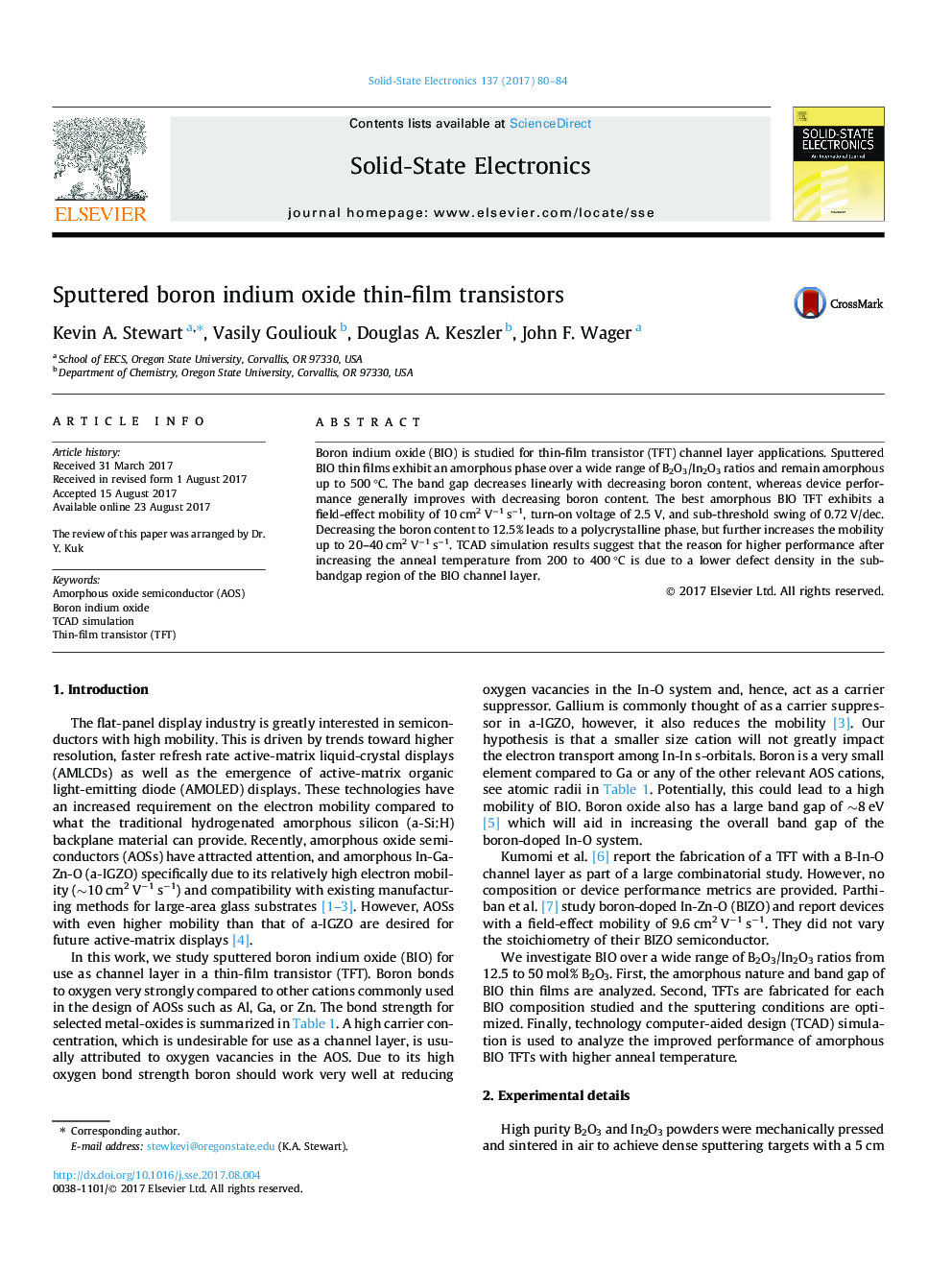| Article ID | Journal | Published Year | Pages | File Type |
|---|---|---|---|---|
| 5010194 | Solid-State Electronics | 2017 | 5 Pages |
Abstract
Boron indium oxide (BIO) is studied for thin-film transistor (TFT) channel layer applications. Sputtered BIO thin films exhibit an amorphous phase over a wide range of B2O3/In2O3 ratios and remain amorphous up to 500 °C. The band gap decreases linearly with decreasing boron content, whereas device performance generally improves with decreasing boron content. The best amorphous BIO TFT exhibits a field-effect mobility of 10 cm2 Vâ1 sâ1, turn-on voltage of 2.5 V, and sub-threshold swing of 0.72 V/dec. Decreasing the boron content to 12.5% leads to a polycrystalline phase, but further increases the mobility up to 20-40 cm2 Vâ1 sâ1. TCAD simulation results suggest that the reason for higher performance after increasing the anneal temperature from 200 to 400 °C is due to a lower defect density in the sub-bandgap region of the BIO channel layer.
Related Topics
Physical Sciences and Engineering
Engineering
Electrical and Electronic Engineering
Authors
Kevin A. Stewart, Vasily Gouliouk, Douglas A. Keszler, John F. Wager,
